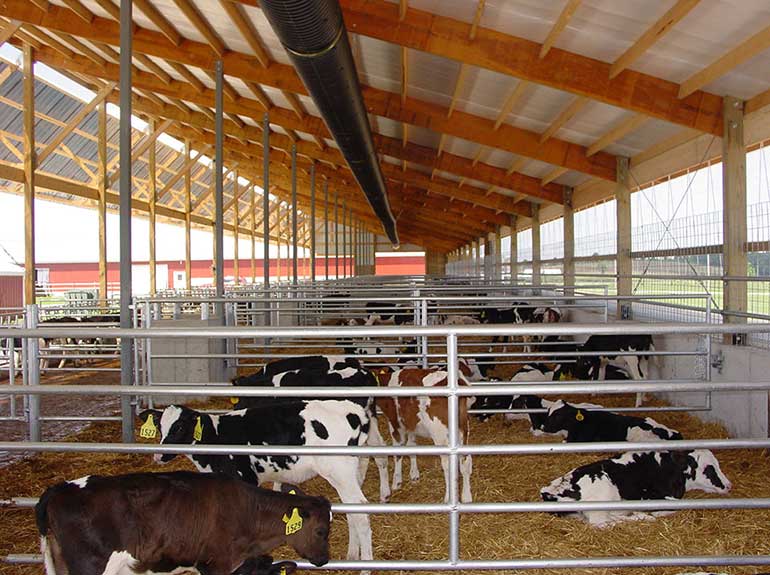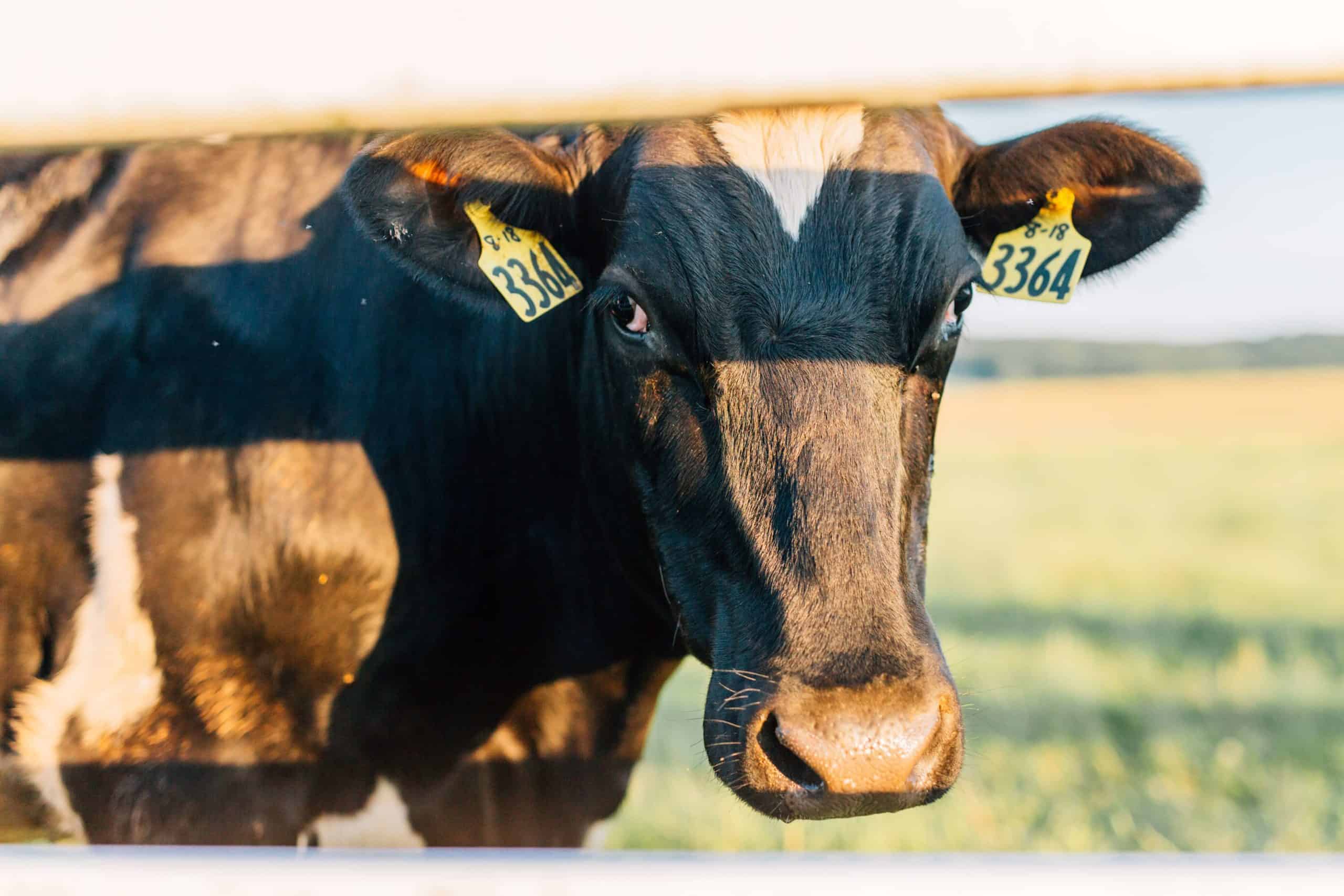Shelter for the calf

Prevention is better than cure
A calf’s housing is a significant factor in a calf’s growth, health and well-being. Many common calf illnesses are caused by air-borne pathogens, faecal-oral, and calf-to calf transmission of organisms. All of these rife in the poorly ventilated, drafty, dirty shed.
Air quality
Fundamental to a healthy environment for calves is excellent air quality. The following are prevalent in an inadequately ventilated shed.
- Ammonia gases
- Pollutants
- Air-borne pathogens
These are all inhaled by the calf and problems compound when a calf has had insufficient colostrum. In high quantities they can lead to respiratory disease that can cause permanent damage, pneumonia and often – death.
Providing fresh, dry circulating air in the pen area is essential. The humidity, moisture, ammonia gases, and pollutant concentrations at calf level should be as closely regulated and monitored.
Calf pen designs
Calf pens should allow each calf a minimum of 1.5m – 2.0m. There are as many and varied shed design ideas as there are farmers, but do your homework and allow as much space as your budget allows. Calf pen designs with a low stud, fixed solid side and rear panels limit air exchange at calf level. This encourages dampness and very poor air quality during all seasons. On the other hand, an all interior where all pens are open sided can mean poor draft protection – even in an enclosed building.
Feed and water
All feeding and water consumption should be offered above ground level. This minimises faecal-oral transfer of pathogens, and in addition to this makes for easier cleaning and disinfecting.
Adaptable housing and penning
Ventilation requirements vary throughout the seasons. Calves are easily stressed in cold weather since their ability to generate heat is limited. Provide a dry, generously bedded, draft-free space that protects them from cold winds and precipitation during cold weather. As temperatures warm up higher air exchange rates are required, and providing shade and air circulation reduce heat stress.
In New Zealand and Australia – calves are mostly reared in temperate spring conditions, not too cold but they can vary considerably. Ngahiwi favour calf sheds that offer flexibility to mitigate fluctuation. There are sheds that are manufactured with automatic “roll up wall blinds”. These sheds incorporate multiple-sides to roll up or down as needed. Automated is best, and motor driven wall blinds with temperature sensors are the best of all.
Bedding
Good bedding management and pen cleanliness minimise faecal-oral transfer and ammonia build-up.If pens are to be used continuously, always keep a layer of at least 100mm of fresh bedding on top of soiled bedding. Moist bedding breeds harmful bacteria, soaks up ammonia, and conducts heat away from the calf’s body. Constant exposure to a large population of pathogens will eventually overpower the calf’s immunity and predisposes it to disease. Also, if a calf has no alternative but to lie on damp bedding, the bedding will conduct body heat away from it. This loss of body heat depletes energy resources that the calf could have used for growth.
The more frequently soiled bedding is removed and replaced with fresh, dry material the lower pathogens and ammonia problems will be. Your eyes and nose are a much more efficient guide than a calendar in this respect.
Not sure what your calves are experiencing?
Climb in the pen and feel for yourself. Crouch down. How does it smell? Is it drafty? Do your clothes get dirty or wet? If ‘yes’ is your answer then address the problem and these change your system.
Ideally a system should be implemented where each pen is cleaned, disinfected, and kept empty for at least seven days between calf batches. This keeps pathogen levels low.
Key points for shedding and shelter
- Calves must be kept inside for at least 3, ideally 5 weeks
- Calves must be dry and draft free – check ground level drafts
- Temperature constancy and air flow important
- Pens twice as deep as it is wide
- Bedding – straw, bark or shavings at least 200-300mm deep
- Top 100mm layer scrupulously and regularly changed
- Control rodents and birds to prevent disease transfer
- Water and meal off-ground to prevent faecal-mouth transfe

